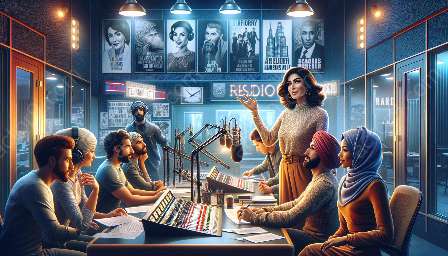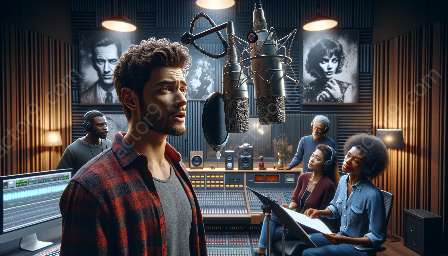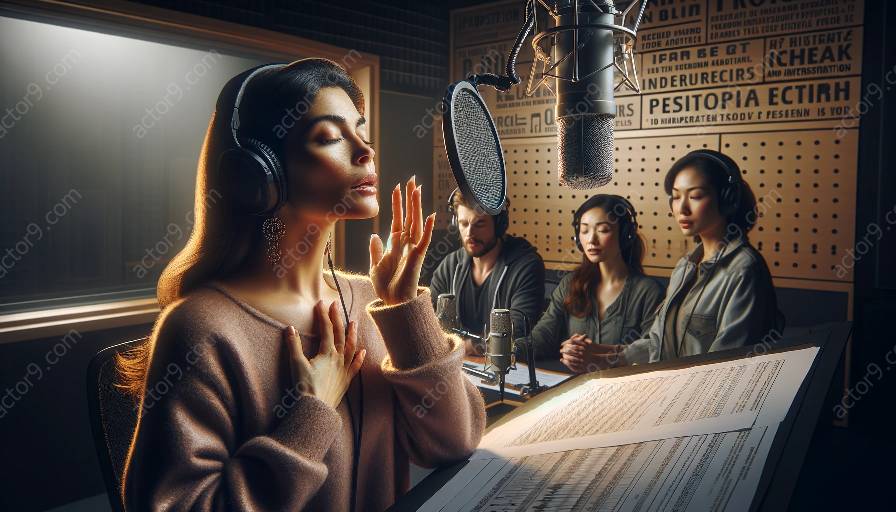Radio drama is a unique medium that relies heavily on the actors' abilities to convey emotions and actions solely through their voices. In this topic cluster, we will explore the art of performance, interpretation, and production in radio drama, focusing on how actors can effectively convey emotions and actions through their voices to create compelling and engaging performances.
Understanding the Art of Radio Drama Performance
Radio drama performance involves a different approach compared to other forms of acting. Without the visual element, actors must rely solely on their voices to deliver a convincing performance. This requires a deep understanding of vocal techniques, emotional expression, and the ability to convey actions through intonation, pacing, and delivery.
Interpretation and Emotional Depth
Interpretation is key to delivering emotions and actions through voice in radio drama. Actors need to fully understand the character they are portraying and embody their emotions through their voice. This involves delving deep into the character's psyche, motivations, and emotional journey to authentically convey their feelings to the audience.
Techniques for Conveying Emotions
Various vocal techniques can be employed to effectively convey emotions in radio drama. These may include modulation of tone, pacing, and rhythm, as well as the use of pauses and breath control to create tension and express various emotional states. The ability to modulate pitch, volume, and timbre can also significantly impact the portrayal of emotions and actions.
Production Aspects in Radio Drama
Aside from the actor's performance, the production of radio drama plays a crucial role in enhancing the conveyance of emotions and actions. Sound effects, music, and overall audio design can complement the actor's voice, setting the mood, atmosphere, and providing cues for specific actions or emotions within the storyline.
Collaborative Approach in Radio Drama Production
Successful radio drama production requires a collaborative effort between actors, directors, sound designers, and producers. Through effective collaboration, actors can receive guidance and feedback to fine-tune their vocal performances, ensuring that emotions and actions are conveyed effectively to the audience through the audio medium.
Embracing the Challenges of Voice-Only Performance
Actors in radio drama must embrace the challenge of conveying a wide range of emotions and actions solely through their voices. This includes mastering the art of using vocal inflections, nuances, and character voice differentiation to bring the script to life and create a vivid auditory experience for the listeners.
Conclusion
Conveying emotions and actions through voice in radio drama performance is a multifaceted art that encompasses interpretation, vocal techniques, and collaborative production efforts. By understanding the intricacies of this art form, actors can create immersive and captivating performances that resonate with audiences, despite the absence of visual cues, making radio drama a truly unique and compelling storytelling medium.






















